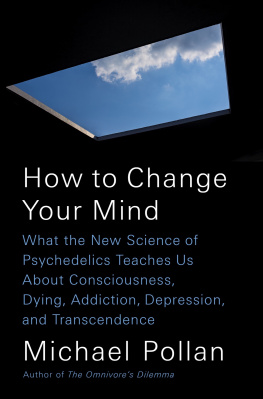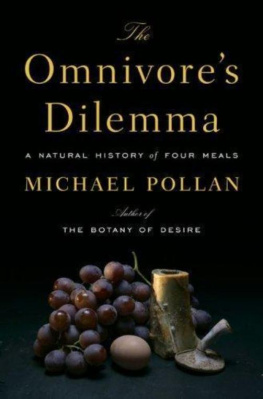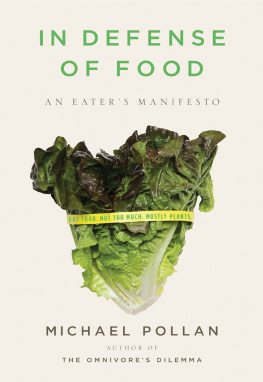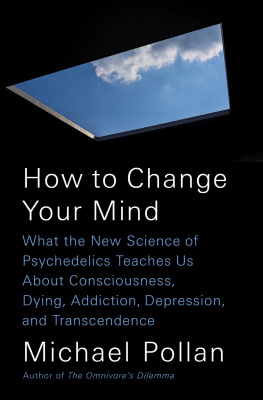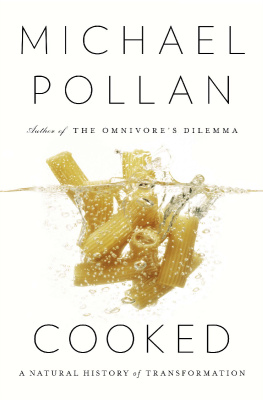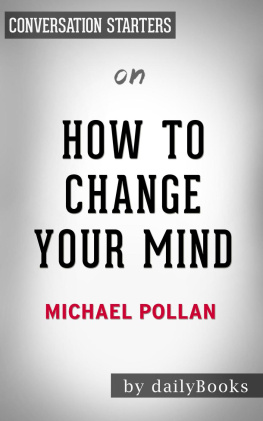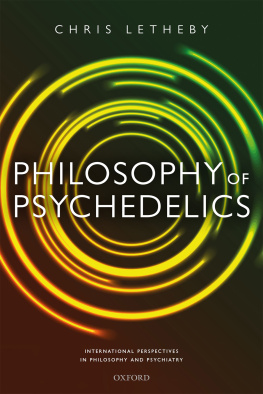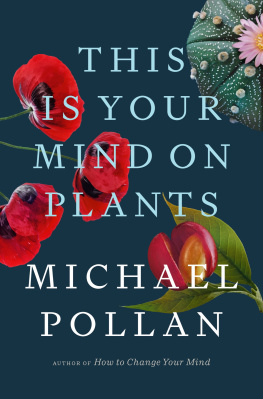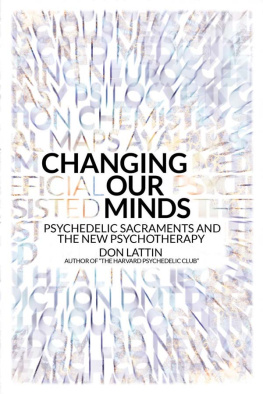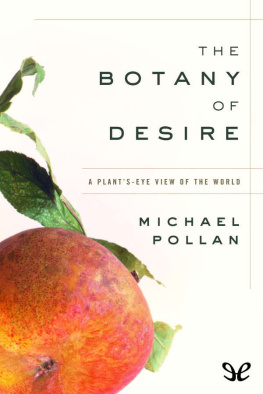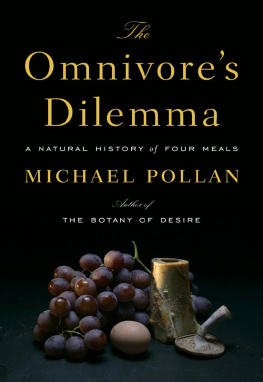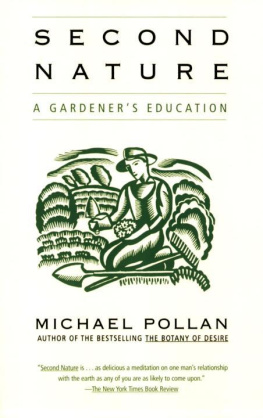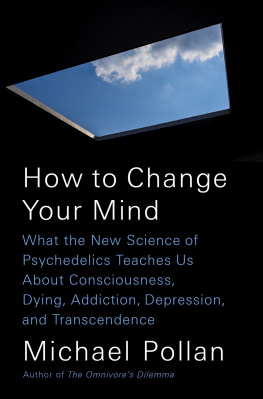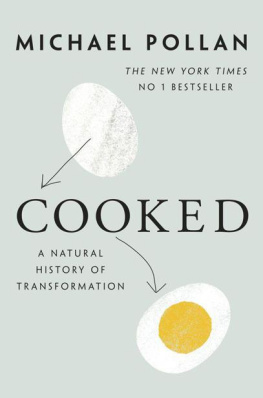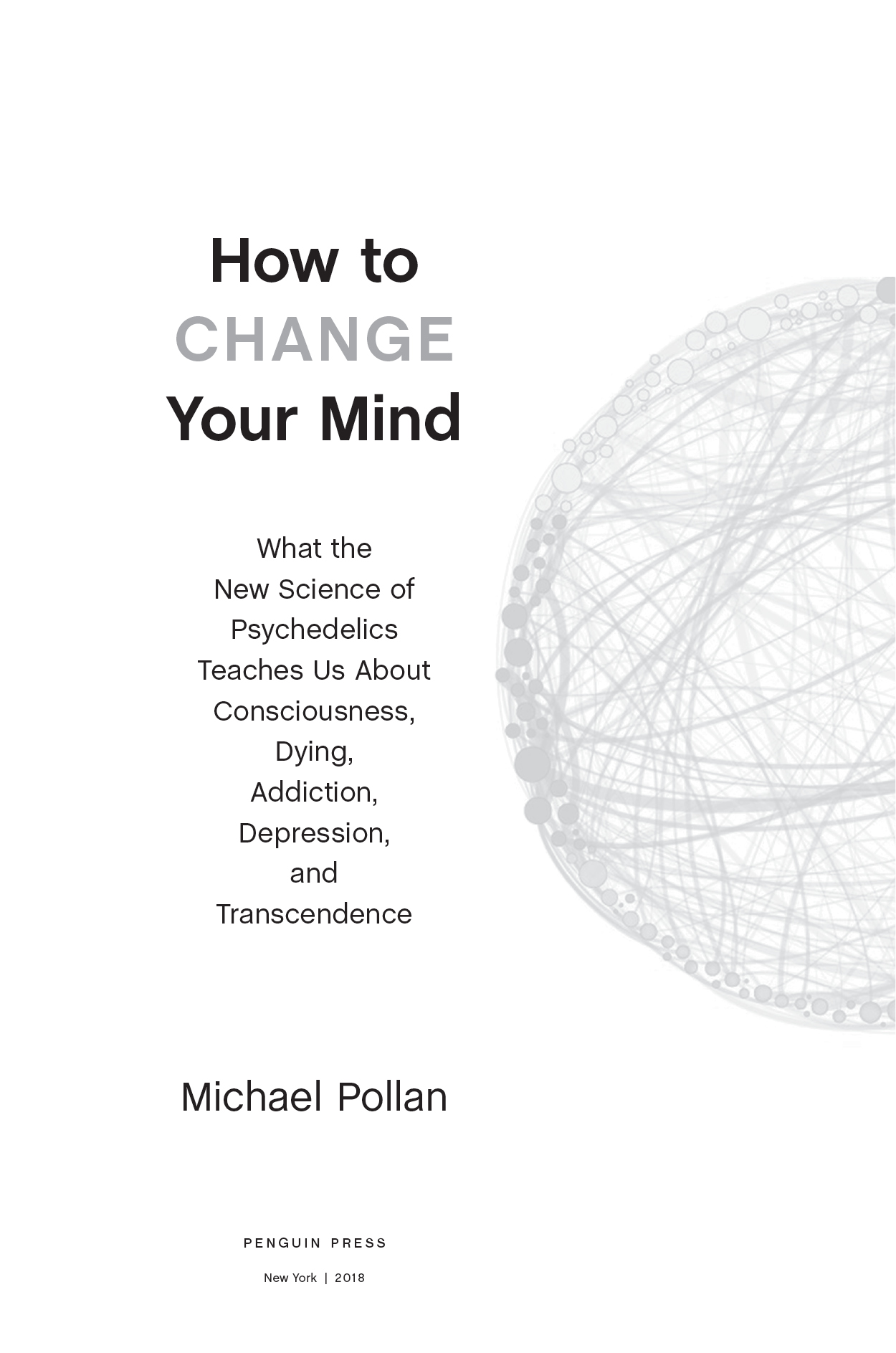ALSO BY Michael Pollan
Cooked
Food Rules
In Defense of Food
The Omnivores Dilemma
The Botany of Desire
A Place of My Own
Second Nature
PENGUIN PRESS
An imprint of Penguin Random House LLC
375 Hudson Street
New York, New York 10014
penguin.com
Copyright 2018 by Michael Pollan
Penguin supports copyright. Copyright fuels creativity, encourages diverse voices, promotes free speech, and creates a vibrant culture. Thank you for buying an authorized edition of this book and for complying with copyright laws by not reproducing, scanning, or distributing any part of it in any form without permission. You are supporting writers and allowing Penguin to continue to publish books for every reader.
Image from Homological scaffolds of brain functional networks, by G. Petri, P. Expert, F. Turkheimer, R. Carhart-Harris, D. Nutt, P. J. Hellyer, and F. Vaccarino, Journal of the Royal Society Interface, 2014.
LIBRARY OF CONGRESS CATALOGING-IN-PUBLICATION DATA
Names: Pollan, Michael, 1955 author.
Title: How to change your mind : what the new science of psychedelics teaches us about consciousness, dying, addiction, depression, and transcendence / Michael Pollan.
Description: New York : Penguin Press, 2018.
Identifiers: LCCN 2018006190 (print) | LCCN 2018010396 (ebook) | ISBN 9780525558941 (ebook) | ISBN 9781594204227 (hardback)
Subjects: LCSH: Pollan, Michael, 1955Mental health. | Hallucinogenic drugsTherapeutic use. | Psychotherapy patientsBiography. | BISAC: BIOGRAPHY & AUTOBIOGRAPHY / Science & Technology. | MEDICAL / Mental Health.
Classification: LCC RM324.8 (ebook) | LCC RM324.8 .P65 2018 (print) | DDC 615.7/883dc23
LC record available at https://lccn.loc.gov/2018006190
NOTE: This book relates the authors investigative reporting on, and related self-experimentation with, psilocybin mushrooms, the drug lysergic acid diethylamide (or, as it is more commonly known, LSD), and the drug 5-methoxy-N,N-dimethyltryptamine (more commonly known as 5-MeO-DMT or The Toad). It is a criminal offense in the United States and in many other countries, punishable by imprisonment and/or fines, to manufacture, possess, or supply LSD, psilocybin mushrooms, and/or the drug 5-MeO-DMT, except in connection with government-sanctioned research. You should therefore understand that this book is intended to convey the authors experiences and to provide an understanding of the background and current state of research into these substances. It is not intended to encourage you to break the law and no attempt should be made to use these substances for any purpose except in a legally sanctioned clinical trial. The author and the publisher expressly disclaim any liability, loss, or risk, personal or otherwise, that is incurred as a consequence, directly or indirectly, of the contents of this book.
Certain names and locations have been changed in order to protect the author and others.
Version_1
For my father
The soul should always stand ajar.
EMILY DICKINSON
Contents
PROLOGUE
A New Door
M IDWAY THROUGH the twentieth century, two unusual new molecules, organic compounds with a striking family resemblance, exploded upon the West. In time, they would change the course of social, political, and cultural history, as well as the personal histories of the millions of people who would eventually introduce them to their brains. As it happened, the arrival of these disruptive chemistries coincided with another world historical explosionthat of the atomic bomb. There were people who compared the two events and made much of the cosmic synchronicity. Extraordinary new energies had been loosed upon the world; things would never be quite the same.
The first of these molecules was an accidental invention of science. Lysergic acid diethylamide, commonly known as LSD, was first synthesized by Albert Hofmann in 1938, shortly before physicists split an atom of uranium for the first time. Hofmann, who worked for the Swiss pharmaceutical firm Sandoz, had been looking for a drug to stimulate circulation, not a psychoactive compound. It wasnt until five years later when he accidentally ingested a minuscule quantity of the new chemical that he realized he had created something powerful, at once terrifying and wondrous.
The second molecule had been around for thousands of years, though no one in the developed world was aware of it. Produced not by a chemist but by an inconspicuous little brown mushroom, this molecule, which would come to be known as psilocybin, had been used by the indigenous peoples of Mexico and Central America for hundreds of years as a sacrament. Called teonancatl by the Aztecs, or flesh of the gods, the mushroom was brutally suppressed by the Roman Catholic Church after the Spanish conquest and driven underground. In 1955, twelve years after Albert Hofmanns discovery of LSD, a Manhattan banker and amateur mycologist named R. Gordon Wasson sampled the magic mushroom in the town of Huautla de Jimnez in the southern Mexican state of Oaxaca. Two years later, he published a fifteen-page account of the mushrooms that cause strange visions in Life magazine, marking the moment when news of a new form of consciousness first reached the general public. (In 1957, knowledge of LSD was mostly confined to the community of researchers and mental health professionals.) People would not realize the magnitude of what had happened for several more years, but history in the West had shifted.
The impact of these two molecules is hard to overestimate. The advent of LSD can be linked to the revolution in brain science that begins in the 1950s, when scientists discovered the role of neurotransmitters in the brain. That quantities of LSD measured in micrograms could produce symptoms resembling psychosis inspired brain scientists to search for the neurochemical basis of mental disorders previously believed to be psychological in origin. At the same time, psychedelics found their way into psychotherapy, where they were used to treat a variety of disorders, including alcoholism, anxiety, and depression. For most of the 1950s and early 1960s, many in the psychiatric establishment regarded LSD and psilocybin as miracle drugs.
The arrival of these two compounds is also linked to the rise of the counterculture during the 1960s and, perhaps especially, to its particular tone and style. For the first time in history, the young had a rite of passage all their own: the acid trip. Instead of folding the young into the adult world, as rites of passage have always done, this one landed them in a country of the mind few adults had any idea even existed. The effect on society was, to put it mildly, disruptive.
Yet by the end of the 1960s, the social and political shock waves unleashed by these molecules seemed to dissipate. The dark side of psychedelics began to receive tremendous amounts of publicitybad trips, psychotic breaks, flashbacks, suicidesand beginning in 1965 the exuberance surrounding these new drugs gave way to moral panic. As quickly as the culture and the scientific establishment had embraced psychedelics, they now turned sharply against them. By the end of the decade, psychedelic drugswhich had been legal in most placeswere outlawed and forced underground. At least one of the twentieth centurys two bombs appeared to have been defused.
Then something unexpected and telling happened. Beginning in the 1990s, well out of view of most of us, a small group of scientists, psychotherapists, and so-called psychonauts, believing that something precious had been lost from both science and culture, resolved to recover it.

